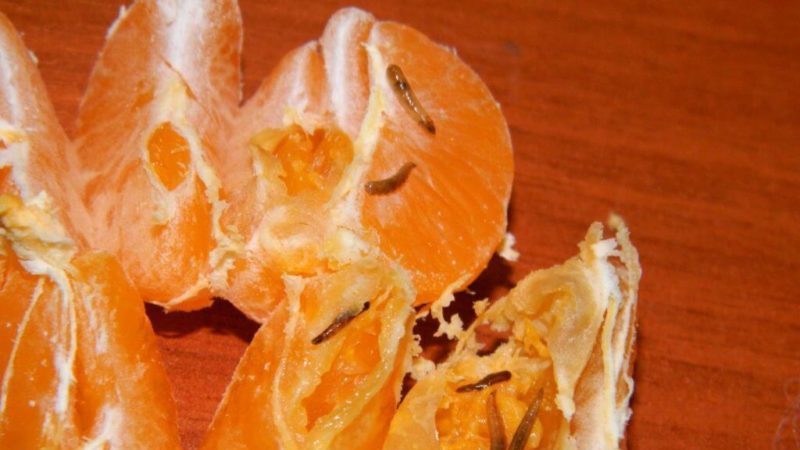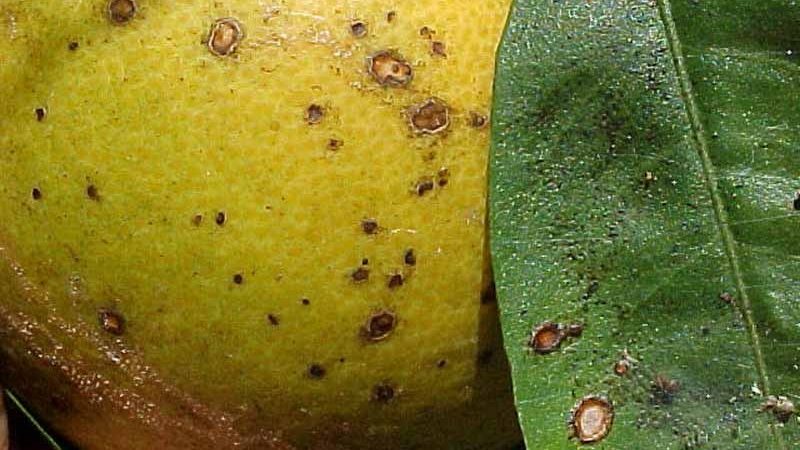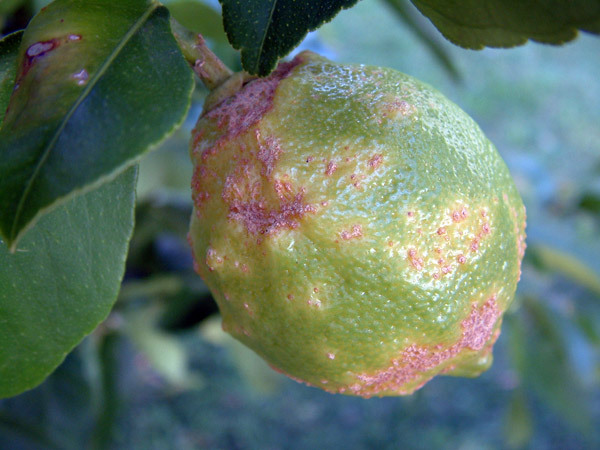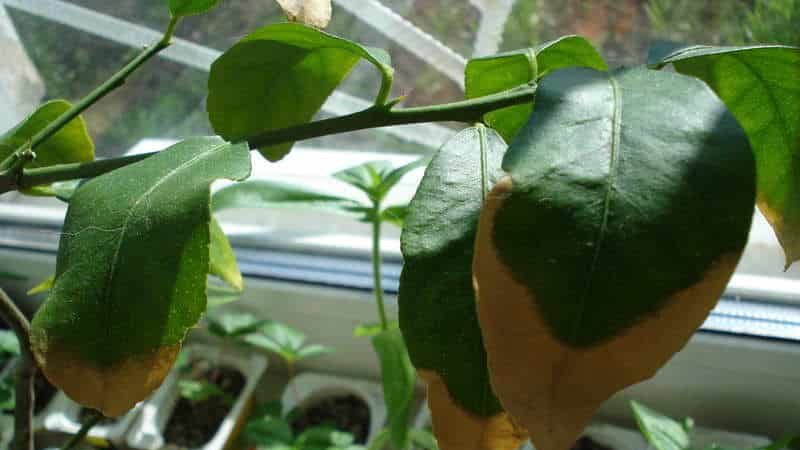How to save tangerines from worms and disease
The tangerine tree is often grown as a houseplant. In order for it to delight with beautiful flowering and tasty fruits, it is properly looked after: they observe the conditions of watering, apply top dressing, regularly transplant and protect against diseases. In case of violation of the rules of care or the wrong neighborhood, a tangerine growing in an apartment can infect infections and pests.
Not all diseases are treatable even if detected early. This also applies to pests. If worms have already started in the fruits, then the crop cannot be saved. How to protect tangerines from such problems, how to treat them and whether it is possible to eat damaged fruits - further in the article.
The content of the article
Can tangerines contain worms

Tangerine worms are rare but real. They are found in fruits purchased from supermarkets. In the fruits of indoor trees, the risk of finding larvae is extremely small.
Only two types of insects lay larvae in citrus fruits:
- mediterranean fly - lays larvae, which look like maggots with a sharp black spine on the tail;
- peduncle - a thin worm that feeds on the pulp of a tangerine and gnaws holes in it.
Parasites get into tangerines, even when the fruits are hanging on the tree. Pests in the pulp are detected by the presence of dark spots, holes and damage on the peel.
Fruits growing on indoor tangerines are rarely affected by such pests. This is possible only if, in the warm season, a pot with a tree is placed in a garden or on an open loggia.
It is not worthwhile to specially treat indoor tangerines from worms with insecticides. This is done in the spring, before flowering, in the event that such a problem arose in the previous year.
If larvae were found in tangerines, of course, you shouldn't eat them. The waste products of these insects cause intoxication of the body.
Major diseases of the mandarin tree
At home, the tangerine tree is less susceptible to disease than in the open field, but there is still a risk of plant infection... This happens when you violate the rules of care, use an infected soil and planting material, in the vicinity of diseased plants. The chances of getting a mandarin infection are especially high in summer if the pot is in the garden or on the balcony.
Indoor citrus fruits suffer from common and specific diseases. Some of them are easy to treat, while others are impossible to fight.
Anthracnose
The causative agent of anthracnose is a fungus. Without timely treatment of the disease, the death of branches, young shoots and leaves is observed, which causes the death of the plant. The infection also negatively affects the fetus. They become bitter and sour, acquire an unpleasant aroma. The storage time is reduced.
Note! Mandarin fruit can also become infected with anthracnose during storage.
With timely treatment, saving a tangerine affected by anthracnose will not be difficult. It is important to know the symptoms of the disease:
- At the initial stages of the disease, the leaves are covered with spots of a light olive hue. Over time, their color becomes more intense. They turn brown at high humidity.
- Small dark spots appear on the tops of the shoots. The branches soon turn brown and then light gray.Blisters and bulging formations appear on them.
- Red spots form on white affected inflorescences. They soon fall off. This also happens with young ovaries.
- Dark spots appear on fruits around the peduncle, which gradually increase in size, damaging the crust. It becomes dark brown and soft.
The reason for the development of anthracnose is high humidity and violation of the rules of care.
To treat the disease, all affected parts of the plant are removed. Places of cuts are treated with garden pitch. Then the tree is sprayed with an antifungal agent:
- Fitosporin. A biological product that is safe for people, the environment and animals.
- "Topaz". Fungicide, which is highly effective. The remedy is poisonous - if the plant was treated during flowering or fruiting, then it is not recommended to eat the fruits.
- Iodine with milk. Folk remedy with antifungal effect. For 4 liters of water, take 1 liter of milk and 30 drops of iodine.
The described means treat the plant cleared of the affected parts. You need to do at least 3 treatments with an interval of 1-2 weeks.
Gommoz
Hommosis is a fungal disease. It leads to flaking of the bark, the death of roots and shoots. Sometimes the infection also affects the fruit, manifesting itself in the form of brown weeping rot.
The disease is recognized by the following symptoms:
- long brown or red spots appear on the branches and trunk;
- cracks appear on the bark, from which a golden-yellow liquid (gum) is released;
- without timely treatment, the affected branches die off;
- after a while the leaves die off;
- brown weeping spots appear on the fruits.
There are several reasons for the development of diseases:
- excessively deep planting with deepening of the root collar;
- contaminated soil and planting material;
- lack of drainage;
- stagnant fluid;
- excess nitrogenous fertilizers;
- lack of potash and phosphorus fertilizers;
- mechanical damage.
To reanimate a house tree, the affected areas are cleaned. They are treated with a solution prepared from 1 liter of water and 2 tbsp. l. copper sulfate and 100 g of lime. Then they are smeared with garden var. Processing is done several times until the problem disappears completely.
Only the stem of the plant is treated. Branches affected by gommosis are removed.
Important! In the later stages, when the disease affects the leaves, it will not be possible to save the tree. In this case, it will have to be destroyed.
Wart
Wart is caused by a fungal infection. This disease leads to the fall of inflorescences, leaves and ovaries, death of shoots, damage to the crop. This disease of the mandarin tree is easily treated at home, but without timely intervention it becomes the cause of the death of the plant.
To save a tangerine infected with wart, it is important to identify the symptoms in a timely manner:
- A translucent yellow bloom appears on the leaves of mandarin in the form of small spots. Soon, growths (warts) of a pinkish-gray hue are formed in these areas.
- Warts form on the shoots. Over time, they combine and turn into a large growth. Because of this, branches may die.
- Orange spots are formed on the fruits, different from the main shade of the peel. They take on a brownish-red hue and grow. Mandarins and unformed ovaries fall off.
Without eliminating the causes of the disease of home tangerine, treatment is impossible. The fungus becomes active at elevated indoor temperatures and high humidity.
To combat the disease, the affected parts of the plant cut off... Places of cuts are lubricated with garden pitch. The tree is sprayed with a solution of copper sulfate.

Late blight
Late blight is a fungal disease that is difficult to cure. If the disease has affected only the ground part of the tree, it can be saved. In cases of damage to the root system, tangerine cannot be cured.
A brown oily banding appears on the trunk.The plant begins to dry out, the leaves fall off, and eventually the tree dies.
Most often, the disease affects young seedlings. The risk of contamination of tangerines grafted onto an orange is especially high.
When signs of late blight appear, the plant is dug up and the roots are checked. If there are traces of disease on them, the tree is thrown away.
If the disease affects only the trunk, then the diseased tissue is scraped out. Mandarin is sprayed with "Topaz" or another fungicide. Additionally, the cleaned area is smeared with garden pitch. Several such treatments are carried out.
Citrus Cancer
Citrus cancer is a bacterial disease. It affects all ground parts of the plant, leading to its death.
Small bright spots of a dark brown hue are formed on the leaves and fruits. They begin to dry out and fall off.
The disease does not respond to treatment. The infected plant will have to be destroyed.

Malsecco
Malsecco is an infectious disease. Spores of the pathogen spread through the air. They are also transmitted through the affected garden tools and planting material.
It is interesting! In the open field, a dangerous disease affects tangerines in the spring, and at home - from autumn to spring.
Malsecco's symptoms are specific:
- the branches are the first to suffer - on the cut they acquire an orange-red color;
- the leaves fall off, and the petioles remain on the branches.
The disease is not treatable. Affected mandarin is destroyed.
Root rot
Root rot is a disease caused by a fungal infection. It attacks the mandarin root system, causing it to rot. Signs of infection usually appear when the disease is in an advanced state. Due to the improper functioning of the root system on the tree, leaves turn yellow and fall off, inflorescences do not form and fruits do not set.
Reasons for the development of root rot:
- recessed landing;
- excessive watering;
- contaminated soil or planting material;
- lack of drainage;
- use of cold water for irrigation.
How to deal with the disease:
- The plant is dug up, the root system is cleaned from the ground and examined.
- The roots affected by the infection are cut off. The knife is disinfected before work.
- The roots are washed with a light pink solution of potassium permanganate. The cut points are sprinkled with ash.
- The root system is soaked in “Kornevin” for 12 hours. Then the tree is transplanted into a new disinfected soil, without deepening the root collar.
- The number of waterings is temporarily reduced. The leaves are wiped with a damp cloth every other day.
Tristeza
Tristeza is a viral disease that affects the bark of a plant. In varieties that are immune to it, the infection is in a latent state. That is, if graft a branch, in the cells of which this virus is located, an unstable stock will soon fall ill.
The virus infects trees 5 years and older. The symptoms of tristeza are as follows:
- leaves fade, acquire a bronze tint, veins turn yellow, leaf plates fall off;
- branches and young shoots die off and fall off;
- fruits change color and fall off, inflorescences and ovaries (if the disease is activated at this stage) fall off.
Like other viral diseases, tristeza is not treatable. The affected plant is removed.
Xylopsorosis
Xylopsorosis is a viral disease. Its peculiarity lies in the fact that the infection can remain latent for up to 10 years. The virus activates unexpectedly and develops rapidly.
The infection affects the bark of the tree. This leads to cracking and flaking. Gum is released. The diseased parts of the plant die.
The disease cannot be treated. Sick tangerines must be destroyed.
Diseases due to lack of nutrients
Sometimes the signs of a lack of micro- and macronutrients are confused with symptoms of diseases. The most common cases:
- Nitrogen deficiency. Light yellow dots appear on the leaves. Over time, the entire leaf plate turns yellow and fades.
- Lack of phosphorus.At the end, the leaf plate takes on a rusty hue. The color of the rest of the leaf fades.
- Lack of potassium. Folds and dents on the leaf plate near the veins.
- Lack of manganese, zinc and iron. The leaves turn pale, yellow-green. Bright green veins appear contrasting.
When the alkaline balance of the soil is disturbed, leaves fall.
How to understand that a tree is dead

Many diseases, without timely treatment, lead to the death of the tangerine tree. How to understand that the plant can no longer be saved? They are guided by the following signs:
- Leaves fell from the tree. This symptom should be paid attention only in conjunction with other symptoms. Leaf fall also begins with a lack of trace elements, and sometimes in winter.
- The shoots fall off. The branches became dry and brittle.
- Mandarin stopped in development.
Separately, the symptoms do not always indicate the death of the mandarin. The plant is killed if they are present in combination.
How to protect plants
Many diseases are difficult to treat. It is much easier to timely carry out prevention:
- soil, planting material and garden tools are disinfected;
- fight pests in a timely manner;
- comply with the rules and frequency of watering;
- when planting, drainage and containers with holes are used;
- regularly contribute feeding;
- plants are transplanted as the capacity is filled with the root system;
- follow the landing rules;
- not grow tangerines next to diseased indoor plants.
Conclusion
Wormy tangerines are rare. It is often found only in fruits purchased at the grocery store. Eating such fruits is dangerous to health.
Tangerine diseases affect even indoor plants. This usually happens when the rules of care are violated. Less commonly, planting material that is already infected with microorganisms becomes the cause of infection. In most cases, saving the tree is possible. The main thing is to recognize the symptoms in time and start treatment.